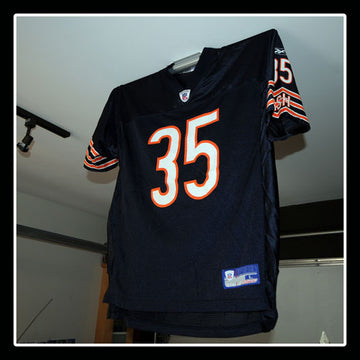
Fantasy football isn’t just a game; it’s a strategic endeavor that melds sports passion with statistical warfare. As the 2024 season approaches, understanding the nuances of your draft can set the stage for dominance. This guide delves into essential drafting strategies, sleeper picks, and tips to navigate your draft with confidence.
Understanding Your League's Format
Success in fantasy football begins long before the draft starts. One must fully understand their league’s format—PPR vs. non-PPR, roster setups, and scoring systems can drastically affect player values. For instance, in PPR leagues, pass-catching running backs gain a substantial boost.
Drafting Strategies
Positional Drafting Strategy: The age-old question of which position to draft first can alter your draft's trajectory. Conventional wisdom suggests prioritizing running backs due to their high volume and scarcity, followed by wide receivers. Quarterbacks, while important, can often be drafted later due to the depth available at the position.
Value-Based Drafting (VBD): This strategy involves drafting players who provide the most significant scoring advantage compared to players at the same position available later in the draft. It requires understanding player projections and their relative value.
Round-by-Round Drafting Tips
In the initial rounds, focus on securing high-impact players who will form the core of your team. The middle rounds are ideal for balancing your roster with solid starters and potential breakout players. Later rounds should target high-upside players who could become pivotal if they pan out.
Sleeper Picks
Identifying sleepers—players slated to outperform their draft position—is crucial. Look for players in new situations, such as a running back who has just moved to a team with a stronger offensive line, or a rookie receiver expected to start.
Drafting effectively in fantasy football requires a blend of preparation, strategy, and sometimes, intuition. By understanding the dynamics discussed, you can navigate your draft effectively and set up for a rewarding season.

If you're searching for an affordable, easy-to-install, and sleek solution to showcase your favorite football jerseys, look no further than Sport Displays and our best-selling Jersey Mount! Featuring a unique Game Day feature, this mount allows you to access and swap out your jerseys in mere seconds—perfect for fans with extensive collections who love to show their team spirit. Discover the ultimate way to display your jerseys at Sport Displays today! www.thesportdisplays.com
1. Tier-Based Drafting
- Concept: Divide players into tiers based on their projected fantasy output, rather than a simple ranking list. This helps you identify when a particular tier is about to be depleted and decide if you need to draft a player from that tier before it’s too late.
- Application: For example, if there are several Tier 2 wide receivers left and only one Tier 1 tight end, it might be wiser to grab the tight end first, even if the wide receivers overall have slightly higher projections.
2. Zero RB Strategy
- Concept: Delay drafting running backs until the middle rounds and instead focus on securing top-tier wide receivers, tight ends, and perhaps a quarterback. This strategy can be particularly effective in PPR leagues or when you draft later in the first round.
- Application: Focus on building a strong core of high-volume pass catchers and then target high-upside, under-valued running backs in later rounds who have the potential to outperform their draft position.
3. Robust RB Strategy
- Concept: Opposite of the Zero RB strategy, this involves prioritizing running backs early and often. Given their high injury rate and volume-dependent scoring, securing several top-tier running backs can provide a significant advantage.
- Application: Draft running backs with your first few picks to ensure depth at this volatile position, which can shield your team from busts due to injuries or underperformance.
4. Streaming Positions
- Concept: Some positions, particularly quarterbacks, tight ends, and defenses, can be effectively managed on a week-by-week basis through waivers based on matchups. This allows you to focus draft capital on more scarce positions.
- Application: Instead of drafting a quarterback early, you can wait until the later rounds to pick one and plan to stream the position throughout the season based on favorable matchups.
5. Handcuffing
- Concept: Drafting the backup to one of your prominent players, particularly running backs, as a security policy against injury.
- Application: If you draft a running back with injury concerns or who shares carries, securing their direct backup can mitigate risk and ensure you don’t lose production at the position.
6. Late-Round QB Strategy
- Concept: Since the quarterback position is deep, some drafters prefer to wait until the later rounds to select a QB. This can allow a team to build strength at other more variable positions first.
- Application: Focus your early picks on high-value running backs and wide receivers, then target a quarterback with high upside in the later rounds.
7. Balanced Roster Construction
- Concept: Maintaining a balance between positions throughout the draft to ensure you are not left with significant gaps.
- Application: Regularly assess your roster as the draft progresses, ensuring you are not overly heavy or light at any position.
8. Adjust to Draft Flow
- Concept: Be adaptable based on the drafting patterns of your opponents. If there's a run on a particular position, it may be wise to secure a player in that position before a significant drop-off in value.
- Application: If you notice several tight ends going off the board in a short span and you haven’t drafted one yet, it might be time to pick one to avoid being left with a low-tier option.
Implementing these strategies involves understanding your league's scoring system, knowing your opponents, and adapting on the fly based on how the draft unfolds. Effective use of these strategies can lead to a well-balanced team poised for a successful season.

Sport Displays Jersey Mounts make your jerseys look professional! Even the pros Use it to display their game worn jerseys! Check us out today at www.thesportdisplays.com
After you've completed your fantasy football draft, the work isn't over. Here are some essential post-draft tips to help you manage your team throughout the season effectively:
1. Analyze Your Roster
- Assessment: Take a close look at your drafted team to identify any strengths and weaknesses. Determine if you're lacking in certain areas or overstocked in others.
- Action: Prepare a list of potential trade targets or watch the waiver wire for players who could balance your roster.
2. Understand Bye Weeks
- Assessment: Review your players' bye weeks to ensure you won’t be left short-handed in any particular week.
- Action: Start planning for alternative options well in advance, either through trades or waiver pickups.
3. Set Up Waiver Priorities
- Assessment: Identify key players you missed out on during the draft.
- Action: Place them on your waiver watch list and prioritize claims based on your team’s immediate needs.
4. Monitor Player Health and News
- Assessment: Injuries and player roles can change rapidly in the NFL.
- Action: Stay updated with NFL news and be ready to act quickly on player status changes due to injuries or depth chart movements.
5. Engage in Trade Talks
- Assessment: Evaluate other teams in your league to see which owners might have surplus talent at positions you're weak in.
- Action: Initiate trade discussions to improve your team, targeting teams with complementary needs.
6. Plan for the Playoffs
- Assessment: Even if the playoffs seem far away, planning for them can give you a competitive edge.
- Action: Acquire players who have favorable matchups during the fantasy playoffs, especially if your league's trading deadline allows.
7. Regularly Update Your Lineup
- Assessment: Active management is crucial to success in fantasy football.
- Action: Check your lineup before each game day to make necessary adjustments based on player matchups, weather conditions, and latest injuries.
8. Use the Bench Wisely
- Assessment: Your bench is not just a storage space for backup players; it’s a strategic tool.
- Action: Rotate players based on performance potential and upcoming matchups, keeping an eye on emerging talents that could be stashed for later success.
9. Stay Active on the Waiver Wire
- Assessment: The waiver wire can be a gold mine for bolstering your squad.
- Action: Regularly review available players, especially after the first few weeks when roles become clearer, and snap up breakout candidates before your competitors do.
10. Enjoy the Game
- Assessment: Fantasy football is a game meant to enhance your enjoyment of NFL football.
- Action: While being competitive, don’t forget to have fun, engage with your league mates, and enjoy the highs and lows of the season.
By staying proactive and engaged, you can navigate through injuries, bye weeks, and underperformers, giving you the best chance to lead your team to the fantasy playoffs and beyond.

For sport fans with large collections don't forget that Sport Displays sell their Jerseys Mounts in 1/3/5/6/10 and 25 packs! Get yours today at www.thesportdisplays.com
Optimizing your waiver wire strategy is crucial for fantasy football success. Here’s a detailed look at various approaches and tactics you can use to maximize the effectiveness of your waiver claims throughout the season:
1. Know Your Waiver System
- Understanding the Rules: Different leagues use different waiver systems—some use a continual rolling list, others a weekly resetting list based on standings, and some might use a Free Agent Acquisition Budget (FAAB). Knowing how your league's waivers work is crucial to formulating a strategy.
- Strategic Application: Adjust your waiver claims based on the type of system. For instance, in a FAAB system, budgeting your dollars throughout the season is key, whereas in a rolling list, more strategic, less frequent claims might be preferable.
2. Prioritize Needs Over Wants
- Assessment: Always assess your roster to prioritize filling weak spots over adding redundant strength.
- Action: Target waivers to address injuries, bye weeks, or underperforming starters, rather than stocking up on players just because they had one good week.
3. Early Season Aggressiveness
- Tactic: The first few weeks are often the most critical for waiver pickups, as roles are still being defined and breakout players emerge.
- Action: Be more aggressive with your claims early in the season to capture potential breakout players before they become well-known.
4. Streaming Positions
- Strategy: Especially useful for positions like defense and kickers, where matchup plays a significant role.
- Action: Don’t hesitate to rotate these positions weekly based on matchups rather than wasting a roster spot on a season-long commitment to a single team/player.
5. Stash and Wait
- Tactic: For deeper leagues, or if you have the bench space, consider stashing players who are one injury away from a starting role or who have later-season breakout potential.
- Action: Keep an eye on handcuffs to elite players, especially running backs, or rookies whose roles are expected to grow as the season progresses.
6. Watch the Transaction Trends
- Monitoring: Keep an eye on which players are being added and dropped in your league.
- Action: You might find valuable insights or pick up on players unjustifiably dropped due to an impatient owner.
7. Midweek Waiver Watching
- Alertness: Not all valuable moves are made right after games; mid-week changes due to injury reports or late-breaking news can create opportunities.
- Action: Stay active and check the wire throughout the week, not just after game days or before matchups.
8. End-of-Bench Strategy
- Flexibility: Use the last spots on your bench for high-upside players rather than mediocre talent with limited potential.
- Action: Rotate these spots frequently to take chances on emerging players or situational opportunities.
9. Anticipate Other Team Needs
- Awareness: Pay attention to the needs of other teams in your league.
- Action: Sometimes blocking a rival team from getting a much-needed player via waivers can be as beneficial as enhancing your own roster.
10. Use Waivers to Facilitate Trades
- Strategy: Picking up a player on waivers with the intention of trading them can be an effective way to strengthen your team.
- Action: If you notice a team in need, and a valuable player is on waivers, picking them up can give you leverage in trade negotiations.
Implementing these waiver wire strategies effectively requires diligence, foresight, and sometimes, a bit of creativity. Stay engaged, monitor player and team trends closely, and always be ready to act on new information to keep your team competitive throughout the season.

Did you know that the Jersey Mount can be mounted to any surface type including the ceiling and even inside of shadow boxes! Check us out today at www.thesportdisplays.com
Trading in fantasy football is an art that requires timing, negotiation skills, and strategic thinking. Here are some key strategies to consider when approaching trades in your fantasy football league:
1. Understand Team Needs
- Assessment: Evaluate not only your own roster's needs but also those of your trading partners. Understanding what other teams lack or have in abundance can guide your trade proposals.
- Action: Look for win-win scenarios where you can offer what others need in exchange for what improves your team.
2. Buy Low, Sell High
- Tactic: This classic investment strategy applies well to fantasy football. Aim to trade for players who are underperforming due to circumstances that may change (e.g., team injuries, schedule) and sell players who are performing at their peak and may regress.
- Action: Monitor player performances and trends closely. If a player on your roster has a couple of unexpectedly high-scoring weeks, consider trading them away at their peak value.
3. Use Strength to Address Weakness
- Strategy: If you're particularly strong in one area (e.g., a surplus of quality wide receivers) and weak in another (e.g., running backs), use your strength to balance your roster.
- Action: Propose trades that offload excess talent in one position to fill gaps in others, enhancing overall team performance.
4. Anticipate Schedule and Playoffs
- Forward Thinking: Look ahead at the NFL schedule, especially for the fantasy playoffs. Players with easy matchups during critical weeks can be more valuable.
- Action: Trade for players who have favorable matchups during your league’s playoff weeks. This foresight can give you a significant advantage.
5. Consider Player Handcuffs
- Security: Especially for key positions like running back, having a handcuff (the backup to one of your starters) can secure your team against injuries.
- Action: If you own a top running back, try to acquire their backup as a safety measure. Alternatively, offer handcuffs to other owners as part of larger trade deals.
6. Negotiate Smartly
- Skillful Communication: Always be diplomatic and open in trade discussions. Avoid low-balling too much, as it can lead to resistance or damaged relationships within the league.
- Action: Start conversations by asking about the other team’s needs and discussing players of mutual interest before making specific proposals.
7. Leverage Social Proof
- Consensus: Sometimes, showing that a player is highly sought after in your league can increase their perceived value.
- Action: Casually mention interest from other teams in the players you are trying to trade away to create a sense of urgency and value.
8. Be Patient
- Timing: Not all trades need to be immediate. Sometimes, waiting a bit can improve your position either by increasing a player's value or by changing a potential trade partner's circumstances.
- Action: If a trade proposal doesn’t go through initially, don’t force it. Keep the lines of communication open and revisit the discussion when conditions change.
9. Manage Risk
- Balanced Roster: While it's tempting to make blockbuster trades, ensure that you're not creating new gaps or taking on too much risk.
- Action: Evaluate trades not only for the immediate benefit but also for how they affect your team's depth and potential injury risks.
10. Stay Informed
- Continuous Learning: Stay up-to-date with the latest NFL news, player injuries, and depth chart changes.
- Action: Use this information to make timely trade offers that can be highly beneficial before major news hits the mainstream fantasy community.
Effective trading can significantly enhance your chances of success in fantasy football. By applying these strategies, you can negotiate from a position of strength, make informed decisions, and improve your chances of winning your league.

Display your jersey never got this easy! Check out Sport Displays and their Jersey Mounts today at www.thesportdisplays.com! Custom colors and custom branding are available!
1. Stream Based on Matchups
- Strategy: Rather than sticking with one defense throughout the season, adopt a streaming approach where you pick up a defense based on their weekly matchups, especially against weaker or turnover-prone offenses.
- Action: Pay close attention to waiver wires each week and prioritize defenses playing against low-scoring teams or teams with high turnover rates.
2. Prioritize Defenses with High Sack and Turnover Potentials
- Selection Criteria: Teams that excel in generating sacks and turnovers often score higher in fantasy due to the potential for defensive touchdowns and the higher point values associated with these stats.
- Action: During your draft or when streaming, look for defenses known for their aggressive pass rush and ability to force turnovers.
3. Look at the Opposing Offense
- Assessment: Evaluate the offenses that your defense will face. Some offenses give up more points to fantasy defenses due to sacks, turnovers, and allowed safety scores.
- Action: Choose defenses with a string of favorable matchups, especially during critical fantasy weeks like the playoffs.
4. Consider Home and Away Dynamics
- Environmental Influence: Some defenses perform significantly better at home due to crowd noise contributing to opponent false starts and other errors.
- Action: Favor defenses playing at home, especially if they have a strong home-field advantage historically.
5. Monitor Weather Conditions
- Weather Impact: Bad weather can lead to lower scores and more turnovers, which is ideal for fantasy defenses.
- Action: Check the weather forecasts before game days, especially for defenses playing in outdoor stadiums prone to severe weather conditions like snow, rain, or high winds.
6. Take Advantage of Defensive Special Teams
- Special Teams Play: Teams with strong return games can provide extra points through kick/punt return touchdowns.
- Action: When evaluating defenses, consider the added potential of special teams scores.
7. Defense by Committee
- Rotational Strategy: Similar to streaming but involves rotating between two or three defenses based on the matchups throughout the season.
- Action: Draft or pick up more than one defense that complements each other’s bad matchups, allowing you to alternate based on who has the more favorable matchup each week.
8. Pay Attention to Bye Weeks
- Planning: Ensure that your primary defense's bye week is covered without needing to drop other valuable players to make room for a one-week replacement.
- Action: Plan ahead by picking up a replacement defense a week early if you have the bench space, avoiding last-minute waiver competition.
9. Avoid Overreactions to One-Week Performances
- Consistency Over Flukes: Defense scores can be volatile. A defense scoring very high in one week might not repeat that performance based on one exceptional play or game situation.
- Action: Focus on consistent performance and matchup favorability rather than reacting to high scoring by a defense in a single week.
10. Utilize Advanced Metrics and Rankings
- Informed Decisions: Use advanced defensive metrics and rankings from reliable fantasy sources to make informed decisions.
- Action: Look for trends in defensive efficiency, points allowed, and rankings in fantasy points against specific types of offenses.
By implementing these strategies, you can effectively manage your defense's position to secure crucial points each week, adapting to the dynamic nature of NFL seasons and maximizing your fantasy roster's potential.
- fantasty football draft,
- fantasy football,
- fantasy football draft,
- fantasy football guide,
- fantasy football tips,
- fantasy football tips and tricks,
- football,
- football fandom,
- football jersey,
- Football Jersey Display Frame,
- football jersey frame,
- football jersey hanger,
- football shadowbox,
- football team store





